As a first generation immigrant, deep within my heart there was always a flicker of curiously, a yearning to understand the country and culture my parents left behind. Their narrative was that they left to secure opportunities for me and my brother. But as I grew older the story became more complex. My Grandfather was a Zoroastrian priest for our community’s most sacred fire temple in Gujarat, India. But it was my Grandmother, the devoted priest’s wife, that convinced her eldest son, my uncle, to expand his horizons and subsequently the family’s destiny. With her blessing our family’s narrative shifted from a small village in Gujarat to the San Francisco Bay Area. She recognized the priestly community was slowly losing it’s once heralded influence over India’s Zoroastrians.
Three decades after my parents left their homeland – with a few suitcases and me, a toddler at the time, in tow – I moved back to Mumbai, into the one bedroom flat where my mother and siblings lived during their college days. It was the epicenter of “the good old days” for my parents. And where I grew from a newborn to a toddler.
My focus was to document the lifestyle of faithful Zoroastrians; something mysterious even to an American Parsi. I listened to Zoroastrian voices ranging from young to old, from Delhi to Chennai, from orthodox to reformist. Often times I found the sincerity of the community was overshadowed by its politics; and the core tenants of the faith altered to justify the community’s xenophobia.
It took me a while to peel back the layers and get to the core of what I was searching for. For me, ‘Parsi Zoroastrian’ was once a term describing a group of people who originally came from Persia and found refuge in India. But after my time in India, those words have a new understanding. They describes a way of life that celebrates the environment, the individual and a higher being. They describe a people that, however small in numbers, have collectively impacted India’s history. Their celebration comes in the form of worship, ritual and devotion. And the community’s strength lies in the true believers who do not seek praise but humbly serve their family, community and nation.

Prophet Zarathustra framed – rural Parsi home, Gujarat.

Prepartions for Muktad prayers – Parsi temple, Pune.
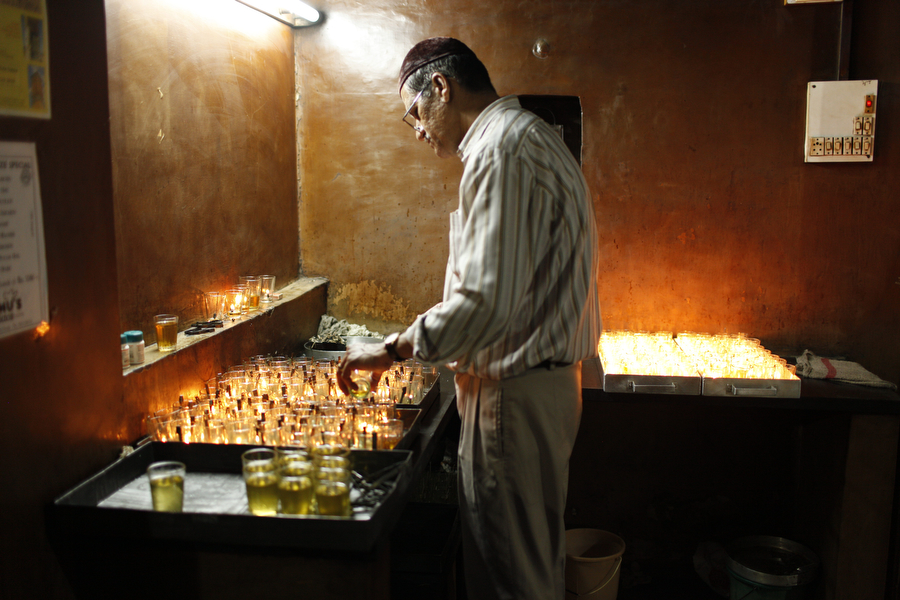
Candles for Muktad – Parsi temple, Pune.

Priests during Muktad prayers – Parsi temple, Pune.

Priests during Muktad prayers – Parsi temple, Pune.

Parsi wedding stage – Pune.

Parsi priest in training – Navsari, Gujarat.

Abandoned Parsi text – rural Gujarat.
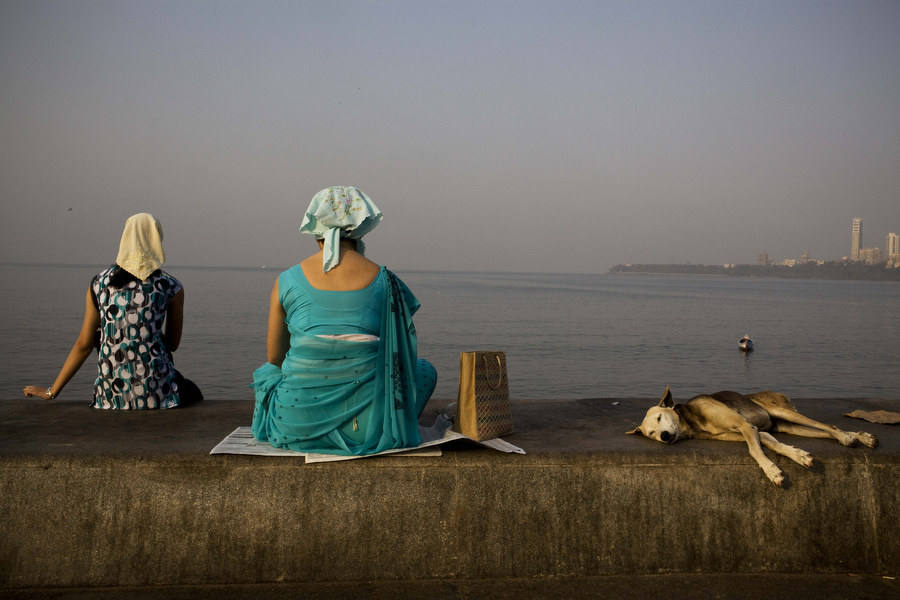
Ava Mahino, Ava Roj – Mumbai.
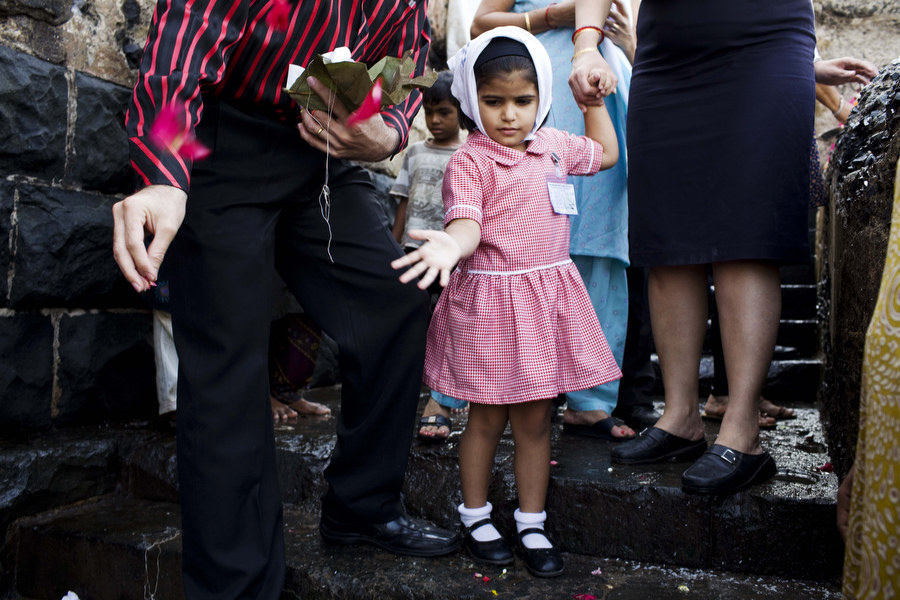
Offerings to the sea – Mumbai.

Worship – Bhikha Behram well, Mumbai.

Temple centenary celebration – Chennai.
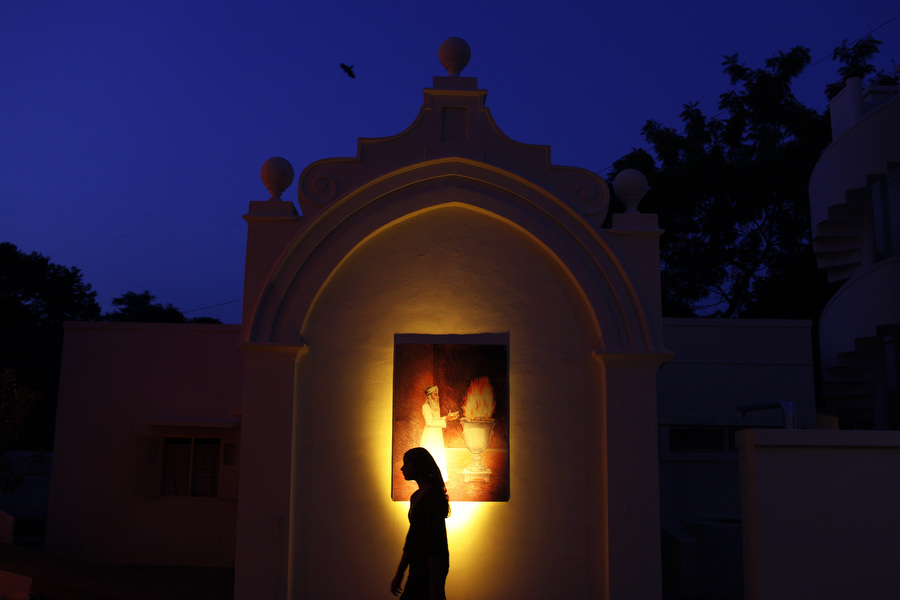
Dusk at Fire temple – Chennai.

Blessing ceremony – Mumbai.

Priests in training – Mumbai.

Memorizing prayers – Mumbai.

Priests in training walk to school – Mumbai.

Young priests – Mumbai.
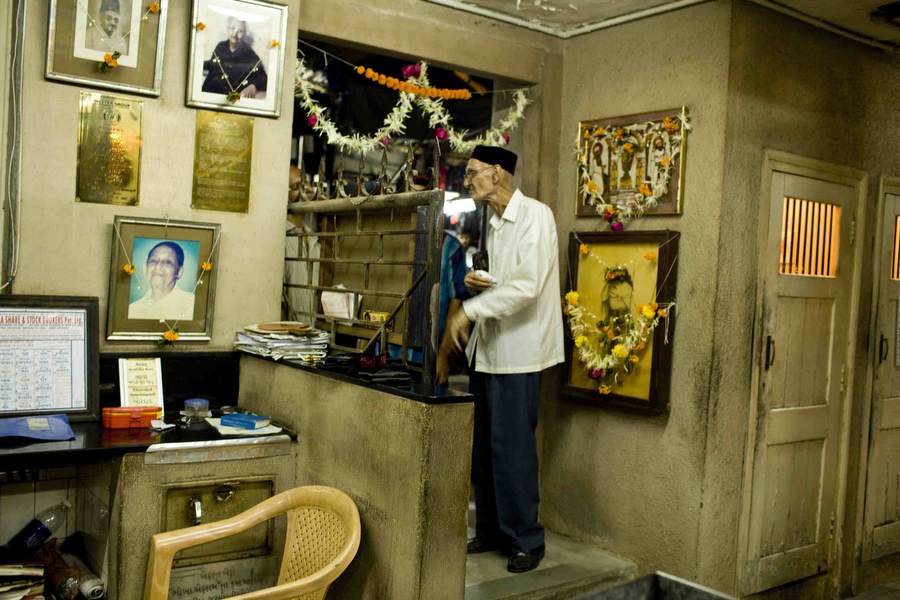
Bhikha Behram well- Mumbai.
Bio:
Ever since she was young, Kainaz has been keenly curious about everything and everyone around her. She loves meeting new people, entering unfamiliar situations and listening to new perspectives.
Kainaz has a B. A. in international relations and political science from Boston University and an M.A. in photography from the School of Visual Communication, Ohio University. In 2010 she was awarded a Fulbright Scholarship to Mumbai, India.
Her images and multimedia collaborations have been recognized by contests including CPOY, Women in Photojournalism, Atlanta Photojournalism Conference, the National Press Photographers’ Contest and the South Asian Journalist Association. She was named a Chips Quinn Scholar in 2007 and was a graduate teaching assistant at Ohio University.
Kainaz joined the multimedia team at National Public Radio (NPR) in December 2011, and is currently based in Washington, D.C.
When she is not behind the camera or the computer, she can be found surrounded by good friends, good food and a ton of laughter.
